Your Baby's First 5 Days of Baby-Led Weaning: A Simple Schedule to Start Strong
- The step-by-step playbook for the first 5 days of baby-led weaning...if you’re on board with self-feeding but not sure WHAT foods to feed, this episode is for you!
- The importance of introducing 1 new low risk food per day 4 days per week and making that 5th new food each week be an allergenic food
- How following this plan for the first week of baby-led weaning will skyrocket your confidence in your baby’s ability to self-feed these foods safely! (...even if you want to start with purees for a few days!)
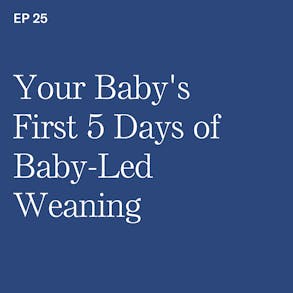
LISTEN TO THIS EPISODE
Episode Description
Not sure what to feed your baby in the first week of baby-led weaning? In this episode, I’m walking you through a simple 5-day schedule to kick off solids with confidence. You’ll learn how to safely introduce real foods, why variety matters from day one, and how to avoid common first-week mistakes.
Ready to plan out week 2? Download my free guide, “10 Easy Starter Foods for Baby-Led Weaning,” to keep the momentum going: https://babyledweaning.co/resources

Links from this Episode
- Free Feeding Guide: “10 Easy Starter Foods for Baby-Led Weaning: https://babyledweaning.co/resources
- Baby-Led Weaning with Katie Ferraro program with the 100 First Foods™ Daily Meal Plan, join here: https://babyledweaning.co/program
- Baby-Led Weaning for Beginners free online workshop with 100 First Foods™ list to all attendees, register here: https://babyledweaning.co/baby-led-weaning-for-beginners
Other Episodes Related to this Topic

Latest Episodes
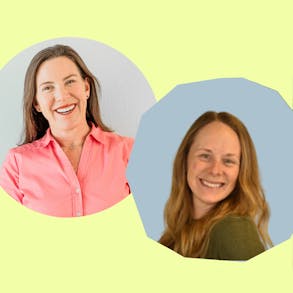
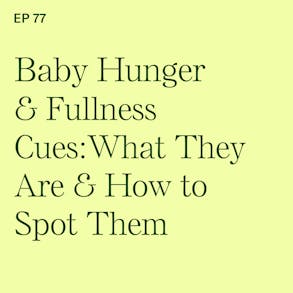
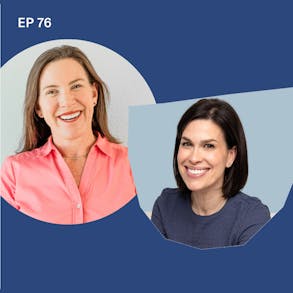
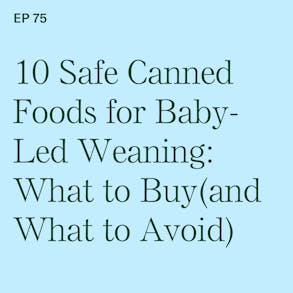

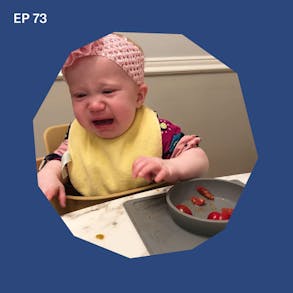
Skylight Frames (1s):
I don't know about you, but my desk has historically been a sticky note graveyard, so it was always full of like little scraps of paper with like doctor's appointments written on them and then other reminders about kids' games and practices and all of this would somehow never seem to make it on the whiteboard calendar. That was literally plastered on the wall next to my desk. I finally got my calendar game up and running for the modern age with the Skylight calendar. The Skylight Calendar is a beautifully designed digital display that syncs with your existing calendars, making it effortless to track events, appointments, and reminders in one easy to see place. So we have our Family Skylight calendar set up on the desk in a corner of our kitchen so all the kids can check their own sports schedules before school so they know what to pack. I even made a new calendar for us called What's For Dinner because I got so sick of seven kids asking me what's for dinner. So I now schedule out weeknight dinners on my Skylight calendar. Although side note, I do not register any feedback or accept complaints about what is on said dinner calendar With the Free Skylight Companion app, you can add or update events lists and more on the go. Your happiness is Skylight Happiness. So if in 120 days you are not 100% thrilled with your Skylight Calendar purchase, you can return it for a full refund, no questions asked. Right now, skylight is offering our listeners $30 off their 15 inch calendar. They have a 10 inch and a 15 inch, we have a 15 inch. Definitely go with it, like that's the size you're gonna want if you go to skylight cal.com/weaning. Again, go to skylight cal.com/weaning to get $30 off your 15 inch calendar. That's skylightcal.com/weaning and get your calendar game on point now. 'cause I know your brain is already approaching max capacity with that baby. And Skylights calendar is pure heaven for connecting your digital and non-digital world together. One more time. That's skylightcal.com/weaning for $30 off their 15 inch calendar.
Katie Ferraro (2m 2s):
And I know that offering fruits and vegetables and those simple starter foods, it's really easy, right? Like yeah, of course you can make avocado, banana, and sweet potato safe for your baby. But what about the protein foods? What about the foods with iron in them? What about the potentially allergenic foods? That's the reason we need to help push your baby beyond those simple starter foods. And you can do this starting in week one. And here are the foods that are gonna make it easy for you to get over that hump and push your baby towards that all important diet diversity. Hey there, I'm Katie Ferraro, registered dietitian, college nutrition professor and mom of seven specializing in Baby-Led Weaning. Here on the Baby-Led Weaning with Katie Ferraro podcast.
Katie Ferraro (2m 44s):
I help you strip out all of the noise and nonsense about feeding, giving you the confidence and knowledge you need to give your baby a safe start to solid foods using Baby-Led Weaning. All right? Let's say you've got your cute little six month old baby or six months plus a week or two or three, and they're sitting on their own and they're showing you the reliable signs of readiness to eat, and you get the baby of the highchair and then you're like, oh my gosh, I don't even know where to start. What foods do I offer this baby? How do I make them safe for the baby to feed to themselves? If this is you, don't worry. You're not alone. In today's episode, I'm gonna give you a simple step-by-step schedule for your baby's first five days of starting solid foods with Baby-Led Weaning.
Katie Ferraro (3m 28s):
I'll share the exact framework that I use inside of my 100 First Foods program, and I promise there are some foods on here that might surprise you that your baby can eat in week one. Now, I'm not just talking fruits and veggies here, I'm gonna walk you through why it's so important to be offering a variety, including one expected protein food that most parents would never think to offer in the first week. But once you do it, it's gonna give you so much confidence, okay? And once you're feeling confident with these first five days, I've got a Free Feeding Guide that's gonna help keep your momentum going. If you wanna download this Free Feeding Guide, it's called 10 Easy Starter Foods for Baby-Led Weaning. And as you'll learn today, we're gonna do five new foods a week. So I'm gonna get you through week one, but I want you to download this Free Feeding Guide in order to get the other two weeks of food so that you are off and running with starting solid foods.
Katie Ferraro (4m 19s):
So if you do wanna grab that Free Feeding Guide, all you have to do is go to babyledweaning.co/resources. Again, that's babyledweaning.co/resources. All of my free feeding guides are there, but the 10 Easy Starter Foods for Baby-Led Weaning, that's a great one if you're just getting started with this approach. If you're new to the podcast, welcome. I release two episodes every week. I do a mini solo Baby-Led Weaningtraining every Monday, and then on Thursday I do a longer interview episode with another feeding expert. So please do be sure to subscribe wherever you're listening to or watching this. And if you have a mom friend who's also starting solid food soon, please tell them about this podcast, Baby-Led Weaning with Katie Ferraro.
Katie Ferraro (5m 3s):
I really appreciate your word of mouth recommendations. It's so important for helping this show grow and to get this information out to parents who want it and need it. So let's dive into your baby's first five days of starting solid foods with Baby-Led Weaning. Now, I like to start each of these mini training episodes with a Baby-Led Weaning tip of the day. And today's tip is by the time you introduce your baby to five different foods in week one, your confidence is going to skyrocket. You know, before you start anything, you're scared of what you don't know. And as I always tell my husband, if you fail to plan, you plan to fail, you've gotta have a plan. So I'm going to share with you the exact five step feeding framework that I use to help you pick the five new foods that your baby is going to eat this week.
Katie Ferraro (5m 46s):
Let's start out with that plan. Why does having a plan matter? Because if you don't have a plan on which five foods you're going to offer your baby, and just to back that up, you might be like, whoa, hold up five foods in a week. That's too much. My doctor said I need to wait three to five days between new foods. No, you do not. There's absolutely no reason to wait three to five days between new foods. Is this perfectly safe for your baby to eat one or even more than one new food every day? Okay, and that's because a lot of times parents think, well, I'm, if my baby has an allergic reaction, how am I gonna know if I'm not waiting a bunch of days? Well, you're gonna know because if your baby has an allergic reaction to food, the vast majority of reactions will occur within minutes and up to no more than two hours following ingestion.
Katie Ferraro (6m 28s):
So again, you do not need to wait three to five days. If you wanna learn more about this, go back to episode 12. It's literally called While You Don't Need to Wait Three to Five Days Between Trying New Foods, that's at blwpodcast.com/12. So having a schedule for the first five days will really help reduce stress and increase confidence. I don't know about you, but I love having a plan written out for me. Like when I sit down to work today, I know that I'm gonna bang out four solo episodes. I have them all outlined scripted, ready to go so that I can just sit down and do my work. That's what having a feeding plan is, because if you don't have a plan and you don't know what foods to feed, then you're not gonna have those foods in your house. Then you're not gonna make those foods for the baby. Then your baby's just gonna be eating the simple starter foods like avocado, banana, and sweet potato over and over and over and over again.
Katie Ferraro (7m 13s):
And that happens to a lot of families. They kind of come outta the gate strong the first three days. They'll do avocado, banana, sweet potato, and then they don't know how to keep going. They don't know how to do whole grains, they don't know how to do the protein foods. They don't realize that they should start doing the allergenic foods early and often. So what are we gonna focus on in the first five days? So it's very important in phase one of Baby-Led Weaning. So in my program, Baby-Led Weaning with Katie Ferraro, this is the first eight weeks of starting solid foods. It is going to take your baby about eight weeks to get the hang of eating single individual soft finger foods. Babies need lots of time to learn how to eat, so you gotta stick with this hopefully for a hundred days to get your baby to a hundred foods before they turn one.
Katie Ferraro (7m 54s):
But the first 40 days, those first eight weeks, we're doing five foods a week. So five foods a week, times eight weeks, the first phase, that's the first 40 foods. It's gonna be a little tedious and you're gonna be like, why am I doing this? My baby's not actually eating that much. Don't stress out. And remember, the majority of your baby's nutrition is still coming from breast milk or from formula even when they start solid foods. So I want you to offer five new foods a week. We do one new single food a day. We don't do combination or multi textured foods early on. It's not safe for your baby yet they don't know how to handle those different textures. We've got to start simple. So we start slow, but we're consistent. Okay? When you're starting out with solid foods in phase one, I like to see babies eating solid foods one to two times per day.
Katie Ferraro (8m 35s):
You do not alter your milk schedule, you do not alter your nap schedule in phase one. Find one to two 15 to 20 minute periods where you can spend some time with your baby, allowing them and affording them the opportunity to explore these new foods. Hey, we're gonna take a quick break, but I'll be right back.
Momcozy (8m 57s):
I am working on my I-B-C-L-C breastfeeding credential right now. It is a long haul. I'm in the thick of it. I'm in a course that's very long, and this section that we're in right now is all about the different types of breast pumps. And let me tell you, breast pump technology has come a long way since the days of modifying dairy cow milking machines, and then trying to use them to extract human milk. There is a new breast pump on the market from Momcozy, which is a brand trusted by over 3 million moms worldwide. Momcozy just launched their air one ultra slim breast pump. I'm so excited to tell you about it. So here's the deal on the air one, this is a pump designed for busy moms on the go. It's ultra slim, it's discreet. Finally, a pump that will not slow you down. It's super compact and lightweight so you don't have to mess around with any more bulky, uncomfortable pumps. And the air one fits seamlessly inside your bra for total convenience. It has a transparent top for easy nipple alignment because let's be real adjusting. A pump should not be a guessing game. It has a wireless charging case. You just pop it in, charge it up, and you're ready to go. No tangled cords, no stress. It's also whisper quiet operating at under 45 decibels so you can pump a confidently anywhere without worrying about noise. Plus the soft silicone flange makes it so comfortable to use. Airone is available now@target.com or at your nearest target store. That's the Momcozy airone Ultra Slim Breast Pump. Available now@target.com or at your nearest target store, and you can learn more at Momcozy dot com.
Katie Ferraro (10m 34s):
Now, what foods do you offer your baby? Well, I have a five step feeding framework that helps devise your weekly meal plan. So the five step feeding framework works like this, okay? Every Monday we offer a new fruit. Every Tuesday we offer a new vegetable. Every Wednesday we offer a new starchy food. Every Thursday we offer a new protein food, and then every Friday we offer a new allergenic food. So that's five different food groups. So if you have a copy of my a 100 First Foods list, there's five food categories on there. Again, there's 20 fruits, 20 vegetables, 20 starchy foods, 20 protein foods, and 20 allergenic foods. Pick one of those fruits for Monday, pick one of those vegetables for Tuesday, pick one of those starchy foods for Wednesday. Pick one of those protein foods for Thursday.
Katie Ferraro (11m 16s):
And then starting in week one, we do a different allergenic food. Every Friday you do that allergenic food two times on Friday, two times in Saturday, two times on Sunday, no other new foods across the weekend, of course, because we're observing for any potential reactions. Each time your baby tries that week's new allergenic food, you can continue to offer the familiar foods from the previous Monday to Thursday or previous weeks. But again, no other new foods with those allergenic foods across the weekend. And then on the following Monday, go right back to starting that whole five step feeding framework again with a new fruit on Monday, et cetera. Now, why is this so important? Because if you default to spoonfeeding commercially available pureed foods, you will only be offering your baby fruits and vegetables. Okay? Take a gander at the pouches or the puree aisle in your grocery store.
Katie Ferraro (12m 1s):
Target, Walmart, wherever you shop, you'll notice it's vastly full of fruits and vegetables. That's fine. There are benefits to fruits and vegetables. Your baby does not need to eat out of a pouch. They should not suck out of a pouch. They do not need to be force fed these foods by spoon. But all those fruits and vegetables, we can make them safe in finger food form for your baby to eat. However, fruits and vegetables, that's only 40% of the variety of foods that your baby can be achieving at six months of age. And we want them to, because with just fruits and vegetables, remember, you're not gonna be getting protein, you're not gonna be getting those allergenic proteins, you're not gonna be getting iron, you're not gonna be getting some of the very important fat soluble vitamins and the minerals that you only get from protein foods, both plant and animals well as whole grains. So sticking to the schedule will ensure that your baby is gonna achieve what we call diet diversity.
Katie Ferraro (12m 43s):
And it's not that hard 'cause you just have to offer one new food a day. If you don't yet have a copy of my original a 100 First Foods list, you can grab that for free on my online workshop. It's called Baby-Led Weaning for Beginners. This is a free online hour-ish long video workshop where I'm gonna show you, I know you guys like listening to podcasts if you're here, but if you wanna see how to make the foods safe and see how the baby picks it up and feeds themselves and see what to do, if your baby gags on food, check out this workshop. It's called Baby-Led Weaning for Beginners. And everybody on that free workshop gets a copy of my original 100 First Foods list. You can sign up to take the workshop at babyledweaning.co/workshop. I'll also put the link in the description below where you're listening to this.
Katie Ferraro (13m 27s):
You can take this right after this podcast later today, tomorrow, when your baby naps, whatever is convenient for you, babyledweaning.co/workshop is a great place to get started, and then you'll get that 100 First Foods list at the end of it. So let's get started on what are the actual foods that your baby can eat during the first week of Baby-Led Weaning? One of the beauties of the a 100 First Foods approach, which I created back in 2016, my favorite thing about it is that you can pick any food from that list and you could offer it on day one for your baby. So I've developed recipes for phase one of the program, which I've explained are the simple starter foods that we do in the first eight weeks for all the a 100 First Foods in my program. There's a phase one recipe, and then I also have phase two and phase three recipes. So once your baby has had a little more experience and they're a little bit more skilled and you move on to those multi textured combination foods, you could pick the foods for the week and do the phase two or three recipes.
Katie Ferraro (14m 13s):
But when we're starting out, we just wanna stick to phase one recipe. So you could literally pick any of the 20 fruits and make them safe for your baby. Any of the 20 vegetables, there is no particular order of foods that you have to feed in. Now, I also have a 100 First Foods Daily Meal Plan for parents that are like, I don't wanna pick the foods, Katie, can you just pick them for me and walk my baby through these 20 weeks of the new foods that they're trying? If that's you, I've got a 100 First Foods Daily Meal Plan for you. So I want to share it the first five days from the 100 First FoodsDaily Meal Plan. So you can get access to my whole 100 First Food content library with videos and recipes and instructions. So you can pick the five foods each week.
Katie Ferraro (14m 53s):
That's kind of the choose your own adventure route. Or if you wanna follow my 100 First Foods Daily Meal Plan, all of that content is inside of my program, Baby-Led Weaning with Katie Ferraro. You can sign up at babyledweaning.co/program if you are interested in learning how to make all the foods on that 100 First Foods list safe foryour baby. So let's get started with the first five days from the meal plan day one. I love to start with avocado. It is one of my favorite foods for baby Led Weaning. It's a great first food. I teach a pure for a few days approach. This is for parents who are particularly anxious about their baby choking on food. I don't care how you decide to start solid foods, you are gonna be scared that your baby's gonna choke if they've only ever had infant milk in their mouth.
Katie Ferraro (15m 35s):
So I teach you a progression of how to do a thin puree of avocado, the chunkier puree of avocado, moving to soft, solid strips of avocado. We do that all in the first meal. And you might be like, what a puree? Yes, you can honor the self-feeding principles of Baby-Led Weaning and still offer your baby naturally pureed foods. We do that using an approach called the pre-loaded spoon. I teach you how to do that inside of the program. So day one is avocado. We do that for about 15 minutes. You can do five minutes of a thin puree, five minutes of the chunkier puree, and then five to 10 minutes of those soft finger foods. And it's really nice to watch, even just in that one first 20 minute feed, your confidence in your baby's ability to feed themselves will grow exponentially when you seed them doing it safely.
Katie Ferraro (16m 17s):
Day two, we're doing a new vegetable. So one of my favorite first vegetables is zucchini. Our phase one recipe for zucchini, our cumin spiced zucchini boats. I'll show you how to peel and roast them. You can also boil them. For all of my recipes I have stove top, instant pot, slow cooker oven recipes, a variety of ways to make each recipe. So you don't need to go buy a bunch of fancy kitchen tools or gadgets to give your baby a safe start to solid foods. So day one is avocado. Day two is zucchini. On day three, we're gonna do our first starchy food. I love sweet potato. It's a really nice kind of gateway food for parents. Before we get into all the wacky whole grains inside of the program, a roasted sweet potato sticks recipe. Here's my pro tip for sweet potatoes.
Katie Ferraro (16m 57s):
If you're roasting them, I don't even wash 'em because I'm just gonna remove the skin. We do not feed the peels or the skins of foods to early eaters. You roast 'em in the oven till they're nice and bubbly, usually about 400 for about an hour or so, depending upon the size of your potato. And then when you take 'em outta the oven and they're just cool enough to handle, that's when you peel away the skin. If you wait till it gets to room temperature or cold is real hard to get the skins off. Sure, you could also peel the sweet potato before you cook it, but to me, that's just like a totally unnecessary step. So I always try to write recipes that maximize your time in the kitchen. I know you do not have time to be cooking from scratch all day every day for your baby. You are a busy person. I designed this program for you.
Katie Ferraro (17m 37s):
So the Roasted sweet potato Sticks recipe. That's on day three. On day four. Here's the kicker. We're doing a new protein. If your family eats animal foods, just rip the bandaid off and go right for lamb. Okay? Yes, lamb. I was just talking with Marsha Dun Klein, who's one of my dear friends. She's a very renowned infant feeding expert. She literally wrote the book on pre feeding and her grandbaby is about to start solid food. So she's like, Katie, I've been studying your program inside and out 'cause I wanna help my son and daughter-in-law, and I can't believe you do lamb on day four, but I know you do because I see your videos of babies eating lamb on day four. So I show you how to make the foods safe. And then we have lots of videos of showing you the baby's eating it, okay? Because seeing really is believing with Baby-Led Weaning.
Katie Ferraro (18m 17s):
Can your baby really eat roasted leg of lamb soft shreddable strips of meat with lots of extra no salt broth on day four? Heck yeah. Now, are they gonna eat a ton of it or two ounces? I don't care how much they eat, we're not concerned with how much your baby eats. We need to give your baby lots of time to learn how to eat. But I also know that you need some help learning how to make foods like lamb safe for Baby-Led Weaning got a beautiful seasoned lamb recipe that we do on day four. You can do it in the oven, you can do it in an instant pot. If you have it a slow cooker, you can do it on the stove top. Again, one recipe, lots of different cooking variations, so there's no reason that you can't do lab for your baby.
Katie Ferraro (18m 60s):
Hey, we're gonna take a quick break, but I'll be right back
Sierra (19m 4s):
At Sierra, discover great deals on top brand workout gear, like high quality walking shoes, which might lead to another discovery, 40,000 steps baby, who's on top now? Karen, You've taken the office Step challenge a step too far. Don't worry though. Sierra also has yoga gear. It might be a good place to find your zen. Discover top brands at unexpectedly low prices, Sierra, let's get moving.
Katie Ferraro (19m 34s):
On day five, we're gonna do the first allergenic food for babies that have been exclusively breastfed and never had anything in their mouth from the cow. I love to do yogurt. Yogurt is a great way to introduce your baby to cow's milk protein. So cow's milk protein is one of the top nine allergenic foods. Those are the nine foods that account for about 90% of food allergy in North America. And research shows us that early introduction of these potentially allergenic foods can help lower the risk of food allergy. Now, if your baby's had formula, the base of commercial infant formula is cow's milk. So I know your baby's already had cow's milk and you're not allergic to cow's milk. You still might try yogurt. The whole milk full fat yogurt, we offer that from the preloaded spoon. It's such a fun food for your baby to self feed. Pro tip though, it is super messy when you do yogurt.
Katie Ferraro (20m 17s):
I always try to align yogurt day with bath day, and we try not to wipe your baby when they're actually eating right. Wiping your baby down in the middle of a meal is a very negative sensory experience for them. Like how would you feel if you were trying to learn how to eat yogurt? And this lady's attacking you with her wet wipe or her wash cloth. So wait until the meal is over. All right, then we take your baby over to the sink, use your hand, some warm water, wipe 'em down, pat 'em dry with a dry towel, put 'em somewhere safe, and then go to town cleaning up that wet Baby-Led Weaning food mess. I never let the mess dry. Okay, dry yogurt is like literally concrete. It's so hard to get off of the table. So in review, the first five days, first week avocado for your new fruit on Monday, zucchini for your new vegetable on Tuesday, sweet potato is your new starchy food on Wednesday.
Katie Ferraro (21m 4s):
Lamb is your new protein food on Thursday, and that first allergenic food, you can do yogurt. It also does not matter again in what order you introduce any of these foods. You can do shellfish as your first allergenic food if you want. We have some families that like to challenge. We have a phase one recipe for crab. You can do fish, you can do soy, you can offer any of these. We just don't do two new allergenic foods for the first time on the same day, right? Because if you did like shellfish and cow's milk protein, and your baby never had either of those, and those are two potentially allergenic foods, shellfish and cow's milk are two of the top nine foods. If you did those together for the first time on the same day and your baby had a reaction, how would you know if it was from the cow's milk or from the shellfish? So that's why we kind of have this system set out to help you move through the top nine allergenic foods.
Katie Ferraro (21m 46s):
So nine weeks into this program, your baby's already eaten all of those allergenic foods. If you wanna grab that full Free Feeding Guide called 10 Easy Starter Foods for Baby-Led Weaning, it has tips on how to make the first two weeks of foods with different foods, 10 different foods, two fruits, two vegetables, two starchy foods, two proteins, and to allergenic foods. Again, that's totally free. It's at babyledweaning.co/resources. If you wanna grab the 100 First Foods list, check out the free online workshop, Baby-Led Weaning for Beginners. That's at babyledweaning.co/workshop. Or if you are ready to get started learning how to make all these foods safe, work in your baby through that 100 First FoodsDaily Meal Plan.
Katie Ferraro (22m 28s):
Check out my full program Baby-Led Weaning with Katie Ferraro. It's 20 weeks worth of meal plans to get your baby to safely eat a 100 First Foods before they turn one. This is the key to making Baby-Led Weaning totally stress-free.That's online at babyledweaning.co/program. All of those links I'll drop in the description. They'll also be on the show notes page for this episode, which you can find at blwpodcast.com slash two five. A special thank you to our partners at AirWave Media. If you like podcasts that feature food and science and using your brain, check out some of the podcasts from AirWave Media. We're online at blwpodcast.com. Thank you so much for listening, and I'll see you next time.
America's Test Kitchen (23m 18s):
Hey everyone, it's Dan Souza from America's Test Kitchen. I'm super excited to let you all know that we're launching a new video podcast that takes you behind the scenes into the messy, imperfect, but riveting day-to-day life right here in our test kitchen. Not only do I get to talk to my colleagues about the latest taste test they attended, I just came from a tasting of salted caramel waffle pie bars and then roasted garlic, so I apologize, Or about a recipe they're developing. The thing about this recipe is it's a secret. The restaurateur refuses to tell people what her secret ingredients are. We also chat with amazing guests from the culinary world and beyond the lamest joke I've ever said, no, it's, I said to Marie Manford, that's a great, it's the, it's a, you definitely said the great joke. Thanks. Thanks, Sam. Make sure to subscribe to In the Test Kitchen so you don't miss an episode. You can watch in the test kitchen on YouTube and Spotify and listen to it wherever you get your podcast. Can't wait to see you in the test kitchen.
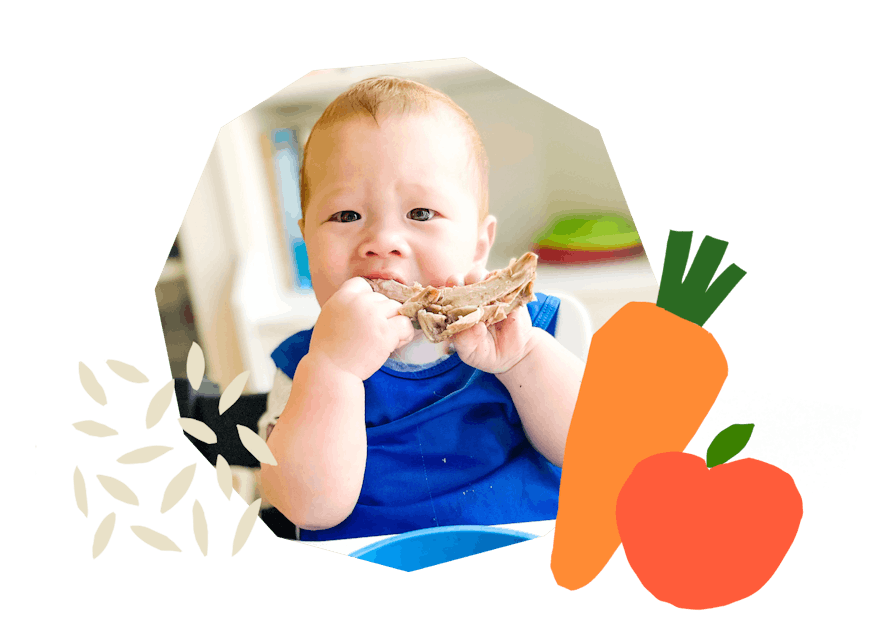
The Program Baby-Led Weaning with Katie Ferraro
A step-by-step digital program for starting solid foods safely and navigating the original 100 FIRST FOODS™ meal plan with baby-led weaning.
 EXPERT-LED, PROVEN APPROACH TO EATING REAL FOOD
EXPERT-LED, PROVEN APPROACH TO EATING REAL FOOD CONCISE VIDEO TRAININGS TO MASTER BABY-LED WEANING
CONCISE VIDEO TRAININGS TO MASTER BABY-LED WEANING 100 FIRST FOODS DAILY MEAL PLAN WITH FOOD PREP VIDEOS
100 FIRST FOODS DAILY MEAL PLAN WITH FOOD PREP VIDEOS
Baby-Led Weaning for Beginners Free Workshop
Is your baby ready to start solid foods, but you’re not sure where to start? Get ready to give your baby a solid foundation to a lifetime of loving real food…even if you’re feeling overwhelmed or confused about this next stage of infant feeding.
Get baby-led weaning recipes and tips delivered to your email inbox.


